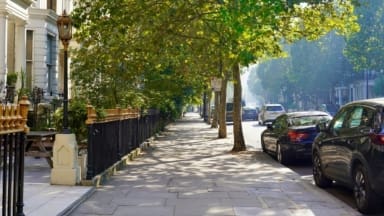
Increasing temperatures and more frequent heatwave events pose threats to population health, particularly in urban environments due to the urban heat island (UHI) effect. Greening, in particular planting trees, is widely discussed as a means of reducing heat exposure and associated mortality in cities.
The study was conducted to understand variation in urban temperatures according to tree canopy coverage and estimate the heat-health impacts of London’s urban trees. Using data from personal weather stations (PWS) across the Greater London Authority, researchers aim to understand how the urban temperatures vary according to tree canopy coverage and thereby estimate the heat-health impacts of London’s urban trees.
The results of the study showed that areas of London with higher canopy coverage have lower urban temperatures, with average maximum daytime temperatures 0.8 °C and minimum temperatures 2.0 °C lower in the top decile versus bottom decile canopy coverage during the 2022 heatwaves. Based on the data, researchers estimate that London’s urban forest helped avoid 153 heat attributable deaths from 2015–2022 (including 16 excess deaths during the 2022 heatwaves), representing around 16% of UHI-related mortality.
Crucially, the results of the study support increasing urban tree coverage as part of a wider public health effort to mitigate high urban temperatures. Increasing tree coverage 10% in-line with the London strategy would have reduced UHI-related mortality by a further 10%, while a maximal tree coverage would have reduced it 55%. The researchers said: “By 2061–2080, under RCP8.5 (baseline emission scenario), we estimate that London’s current tree planting strategy can help avoid an additional 23 heat-attributable deaths a year, with maximal coverage increasing this to 131.”

